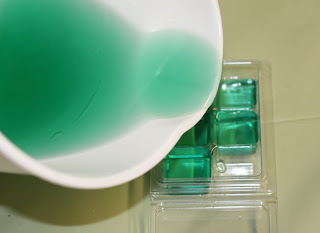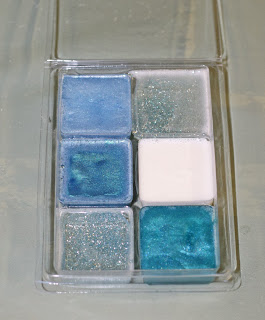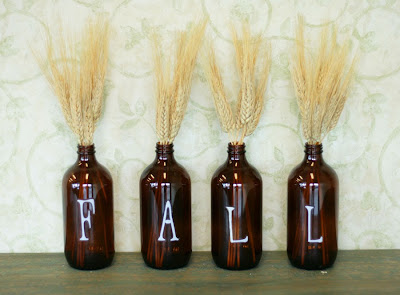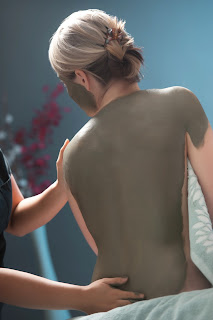Pour the wax into a Small Wax Melt Mold at a temperature of around 130 degrees. Let the mold sit for a few hours in order for it to harden completely. To use, just pop the bar out of the mold and break one square off, then toss into your favourite diffuser. Just like that you have a safe and eco-friendly way of smelling delicious scents all around the home!
Next we made Massage Melts. This is a super convenient way of making these little skin treats! There's no mess and the molds are very inexpensive. Try the recipe for massage melts here or feel free to use our Massage Bar Base! Massage Melts are not just a trendy way of massaging, they provide some exceptional skin care properties. Super high in cocoa butter, they are a wonderful way of delivering moisture to dry areas. Simply melt all the ingredients in a double boiler or microwave until no solids remain.

Add your essential or fragrance oil and stir well. Here we added White Grapefruit and Bergamot for an energizing experience! Make sure that the massage melt base is not higher than about 130-140 degrees, then pour into the Small Wax Melt Molds. Let harden for a couple hours before use. To use: simply break the squares inside the mold and use one at a time for a sensual massage experience! These squares are absolutely perfect for using around dry elbows, knees, and feet, especially at this time of year when it starts getting chillier!
Once the soap has thickened to the point that it has a defined skin on the top, but not rock hard, pour a thin layer of clear melt and pour over the entire mold to seal all the colours together.
Be careful not to over moisten! If you add too much witch hazel the baking soda will react and cause the mixture to grow in volume, not what you want in this situation! Pack the mixture into the Large Wax Melt Molds.
We used a little too much Witch Hazel, can you see how it's foaming around my fingers? That's not exactly ideal, if there's too much moisture it will be crumbly when you try to take it out of the mold and you'll need to keep it in there for longer. We kept the bath bomb mix in the mold overnight and cut it in the morning with the Stainless Steel Cutter, and the result was actually pretty awesome! These personal-sized bath bombs work great and release the soothing scent of pumpkin pie while they bubble.
As the holiday season fast approaches we urge our customers to think outside the box and try something new! You could even make a whole line of products in the wax melt molds and package them in our selection of Gift Baskets!




























































